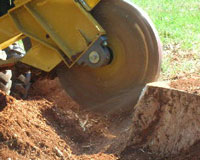On the front range the ash borers attack green or white ash trees, european mountain ash, and lilacs. The larvae bore into the wood of the host plant, creating holes in the trunk and main crotch area. This leads to swelling and cracking of the bark. Die back of specific branches are then observed in mid summer or the following spring after the attack. The borer holes made by the larvae creates an entry for the attack. The holes made by the larvae also create the opportunity for secondary infections from insects and disease organisms. Death to the host plant can occur if attacks go unchecked in continuous years.
Ash trees that are grown in a street or landscaped environment are highly susceptible to borer attack. Trees in stressed conditions due to low fertility, drought, or those defoliated by leaf eating caterpillars are especially vulnerable.
Life cycle
The insect “over winters” as a nearly mature larvae in the trunk of the host plant. In the spring the adults (wasp like moths) emerge, mate, and begin laying eggs on the host trees. The eggs hatch in approximately ten days and the larvae tunnel into the host plant. There is only one generation per year.
Prevention
A spray application with a residual insecticide can be applied to the trunk of the tree once a year beginning approximately in april. The preferred method is injection as the timing is not as important due to the yearlong protection afforded by this delivery method. This is done by one of our certified arbortists around early april – keeping the tree free of destructive insects. Utilizing a good fertility program will also keep the tree healthy.
Curative
If the tree has been attacked, it should be injected with systemic insecticide by april. One of our certified arborists will be happy to provide this service. If the tree is under stress, a multi-nutrient should also be injected into the tree to give it a boost. In late fall or early spring the tree should be deep root fed with the above prevention measure taken the following spring.


